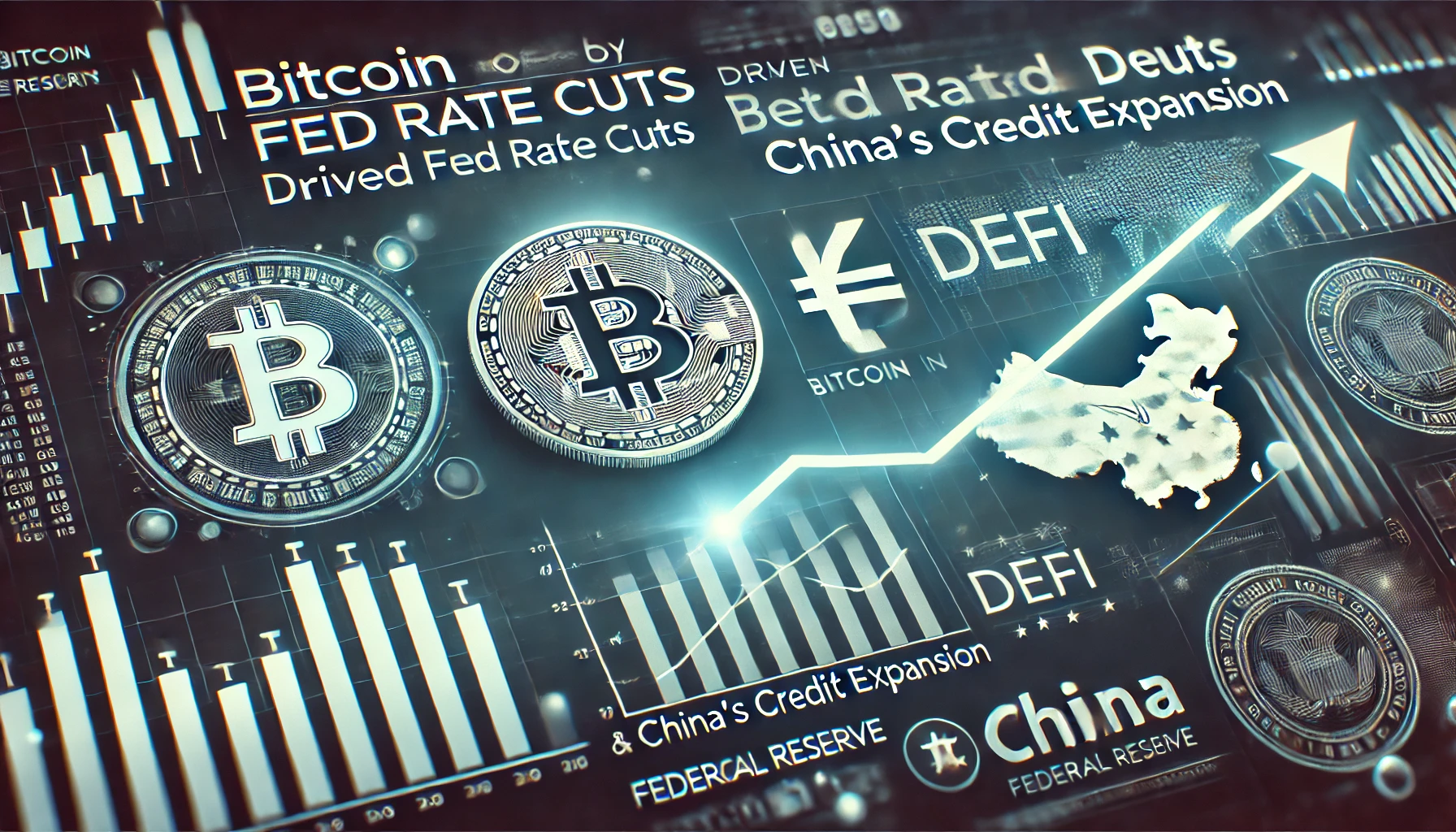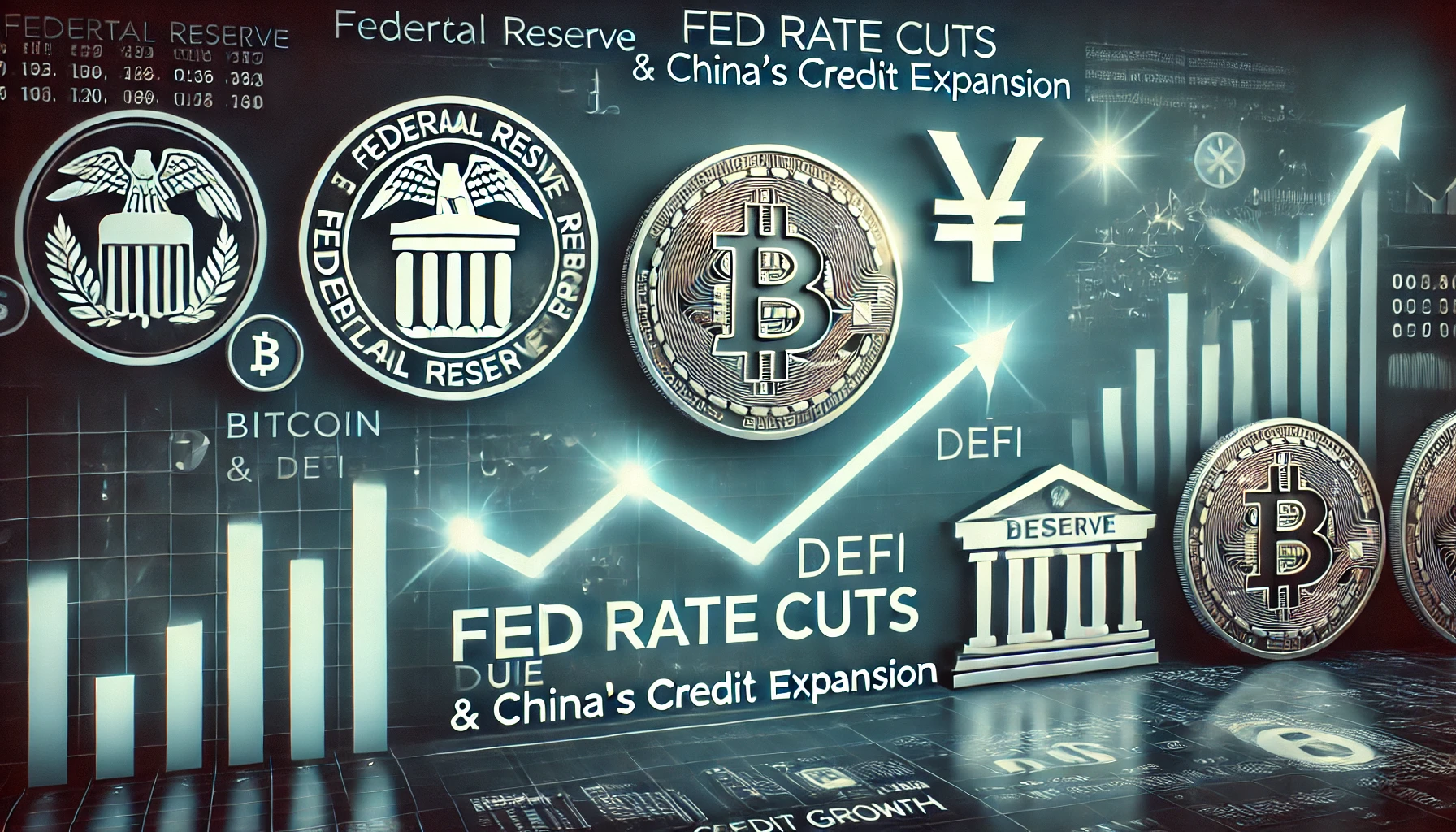The resurgence of Decentralized Finance (DeFi) is being linked to recent economic decisions by major global players. Apollo Crypto, a leading investment management firm, has identified several critical factors contributing to this potential wave of growth in the DeFi space.
“As of today, the total DeFi TVL (Total Value Locked) stands at approximately $105 billion, and many expect a resurgence in DeFi, with a return to the strong fundamentals it offers,” the report stated. Discover the latest developments in DeFi and learn about the key economic factors and infrastructure improvements pushing the sector toward a second growth wave.
The Role of Fed Rate Cuts and China’s Credit Expansion
Apollo Crypto’s latest report emphasizes the importance of the Federal Reserve’s interest rate cuts and China’s credit expansion as major drivers for DeFi growth. These economic moves have created a favorable environment for risk assets like Bitcoin (BTC) and Ether (ETH). China’s central bank, People’s Bank of China (PBOC), has also played a crucial role by lowering short-term interest rates and implementing supportive credit measures, further strengthening DeFi.

Infrastructure and User Experience Improvements in DeFi
The report highlights significant advancements in DeFi infrastructure. Enhancements in building robust frameworks and improving the availability of block space at lower costs have dramatically improved transaction speeds. Projects like Coinbase’s tokenized Bitcoin (cbBTC) aim to make asset rotation smoother for users, with the potential to attract more capital into DeFi.
Leading Protocols in the DeFi Ecosystem
Protocols such as Aave and Uniswap continue to dominate the DeFi space. Aave remains a standout decentralized lending platform, while Uniswap holds its position as the largest decentralized exchange by volume. Despite some mixed reactions to Maker’s rebranding as Sky and its new stablecoin USDS, the protocol is still considered a key player in the DeFi revival.
The potential second growth wave of DeFi is closely tied to both macroeconomic conditions and critical infrastructure developments. With interest rate cuts and credit expansions creating a favorable environment for cryptocurrencies, improvements in DeFi infrastructure are driving increased adoption. Key protocols like Aave, Uniswap, and Maker will continue to play important roles in this evolving landscape. This multi-faceted approach suggests a strong future for the DeFi sector, supported by solid economic policies and technological advancements.
DeFi, Bitcoin, Apollo Crypto, Fed rate cuts, China credit expansion, Aave



















































































































